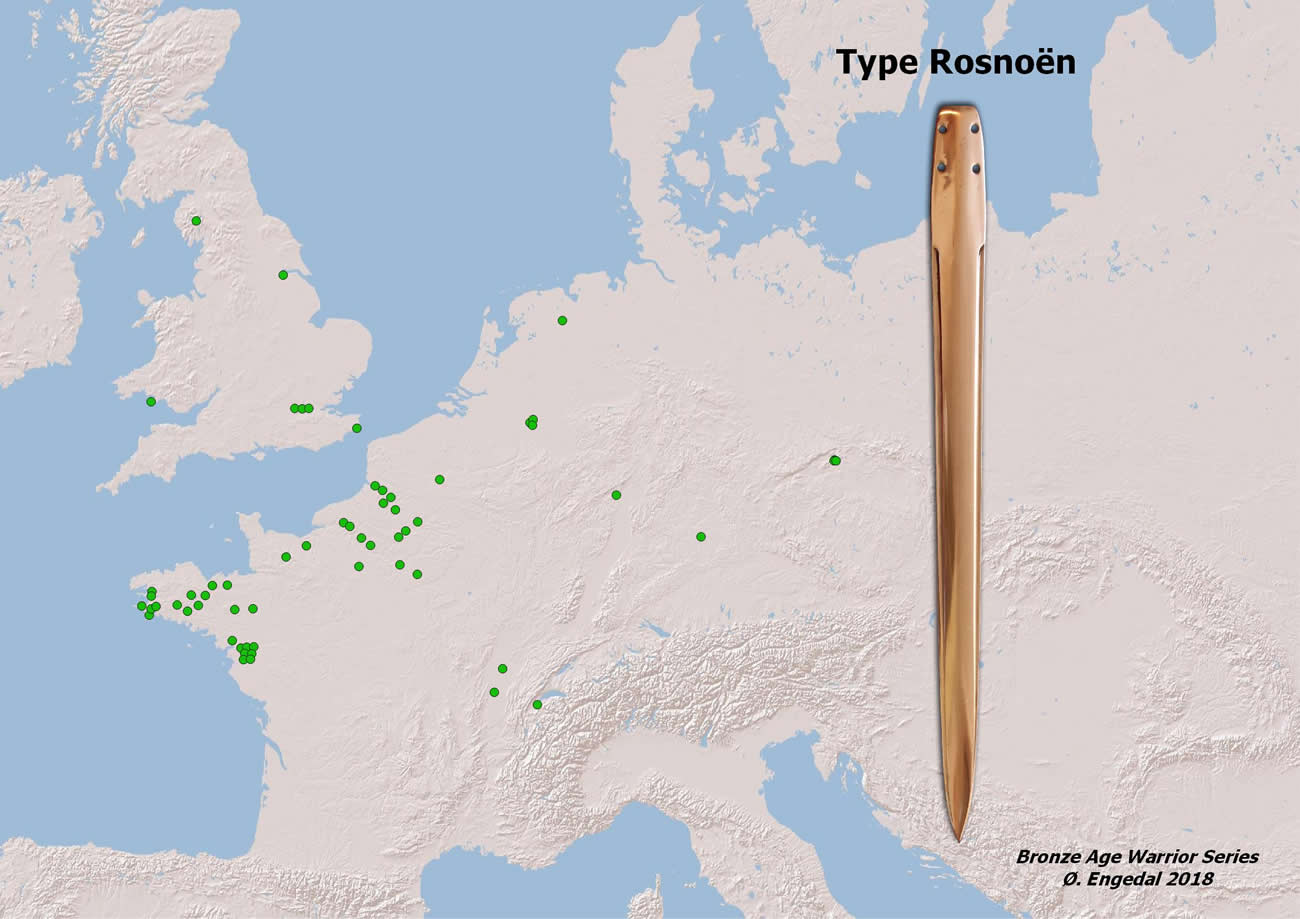Kingston on Thames
Home > The Sword collection >Kingston
Kingston on Thames, UK (type Rosnoën)Weight: c.560 grams - Length: 53 cm - Material: bronze (Cu88Sn12). Edge: hardened through cold hammering, ground - Original:Kingston on Thames, UK (Colquhoun & Burgess 1988: no. 4) Scabbard and sword-belt available, please contact info@warriorbronze.com for options and prices. |
||
|---|---|---|
FROM RAPIER TO SWORD IN THE ATLANTIC BRONZE AGE TRADITION
The Atlantic Bronze Age tradition encompasses Iberia to Scotland, including Western France. In this region people for long favoured narrow blades known as dirks and rapiers (not that they are comparable to modern dirks and rapiers). This was still the situation around 1300 B.C. as Europe further east developed a new generation of swords, building already on 300 years of sword making experience.
The original sword from Kingston on Thames. From: Colquhoun & Burgess 1988: no. 4. The Rosnoën type sword represents a thriving French bronze industry and an era of increased contact between the Atlantic and Central Europe. The replica is based on the sword from Kingston on Thames, United Kingdom, considered to be an import from France (Colquhoun & Burgess 1988: no. 4).
Litterature:
|
||


